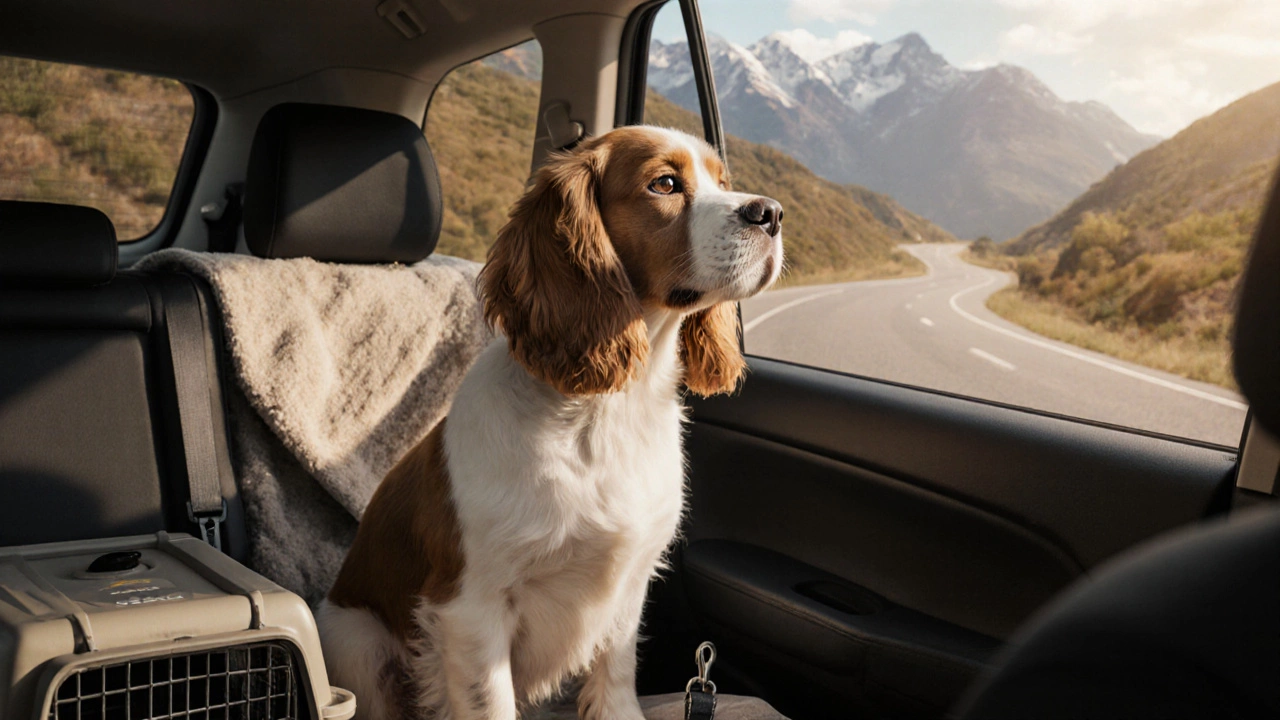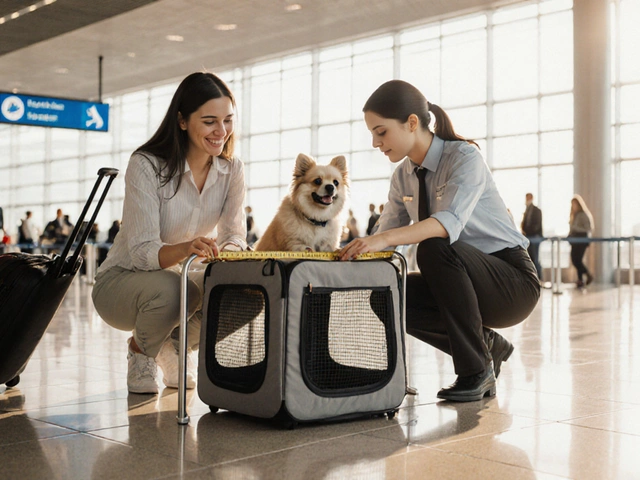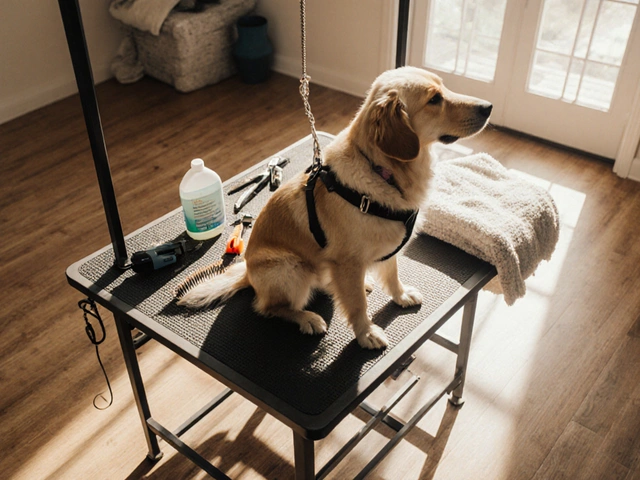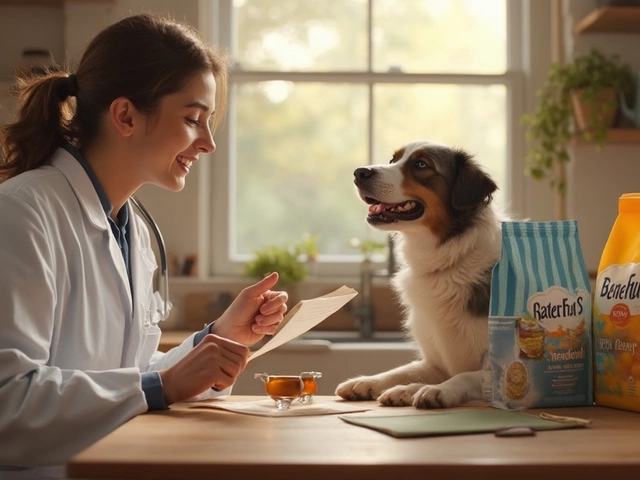Travel-Friendly Dog Breed Selector
Select Your Travel Style
Answer these questions to find your ideal travel companion:
Your Travel-Ready Dog Matches
If you’re planning your next getaway and want a dog that makes travel easy, not stressful, you’re not alone. Thousands of pet owners hit the road each year looking for a four-legged companion who adapts well to hotels, road trips, beaches, and hiking trails. But not all dogs are built for adventure. Some bark nonstop in new places. Others panic in cars. A few can’t handle heat, crowds, or stairs. So what’s the number one dog to get for dog-friendly holidays? The answer isn’t a single breed-it’s a mix of traits that fit real-life travel scenarios.
What Makes a Dog Truly Travel-Friendly?
There’s no point in picking a breed just because it looks cute in a suitcase. You need a dog that stays calm in unfamiliar places, doesn’t destroy hotel rooms, and can handle being outside for hours. The best travel dogs share five key traits:
- Low to moderate energy - They don’t need 2 hours of intense exercise every day. A 30-minute walk and a sniff session at the park is enough.
- Adaptable to new environments - They don’t freeze up or bark at every noise, person, or car.
- Small to medium size - Easier to fit in cabins, on planes, and in restaurants with pet-friendly patios.
- Low shedding - Less fur on your clothes, in the car, and on hotel carpets.
- Good with strangers - They’re not aggressive or overly shy around other people or pets.
These aren’t just nice-to-haves. They’re survival skills for travel. A high-energy dog might be perfect for a backyard, but on a 6-hour drive to the coast? They’ll be restless, whiny, and maybe even sick. A dog that sheds like a snowstorm? You’ll spend more time vacuuming than relaxing.
The Top Dog for Dog-Friendly Holidays: The Cavalier King Charles Spaniel
If you had to pick one breed that checks every box for travel, it’s the Cavalier King Charles Spaniel. They’re not the loudest, strongest, or most famous dog-but they’re the most consistently reliable on the road.
Why? Here’s how they match up:
- Size: 13-18 pounds. Fits in a carrier under an airplane seat or on your lap in a rental car.
- Energy level: Moderate. They love walks, but they’re just as happy curling up next to you on the couch or in a hotel bed.
- Shedding: Low to moderate. Regular brushing keeps it under control-no fur everywhere after a weekend trip.
- Temperament: Extremely people-oriented. They bond tightly with their owners and rarely show anxiety when separated briefly. They’re not barkers unless there’s a real reason.
- Adaptability: They’ve been documented traveling across Europe, camping in national parks, and staying in boutique hotels without issues. A 2024 survey by the American Kennel Club found that 89% of Cavalier owners rated their dogs as “excellent” for vacation travel.
They don’t need a big yard. They don’t demand constant play. They’re content with your presence. That’s why they’re the top pick for people who want to bring their dog on a road trip to the mountains, a beach weekend, or even a city break.
Other Strong Contenders
Of course, the Cavalier isn’t the only option. Here are three other breeds that also perform well on holidays:
- Beagle - Friendly, compact, and curious. They love exploring trails and sniffing new smells. But they can be stubborn. If you’re not good at recall training, they might wander off.
- Shih Tzu - Tiny, quiet, and low-energy. Perfect for city trips or flights. Their long hair needs brushing, but they’re great in hotels and don’t bark much.
- Golden Retriever (smaller lines) - Big heart, big loyalty. But they need more space and exercise. If you’re hiking or camping, they’re fantastic. In a small hotel room? You’ll need to plan for daily walks.
These breeds all have their strengths, but none match the Cavalier’s consistency. Beagles get distracted. Shih Tzus can be fragile. Golden Retrievers are too big for some rentals. The Cavalier? Just right.
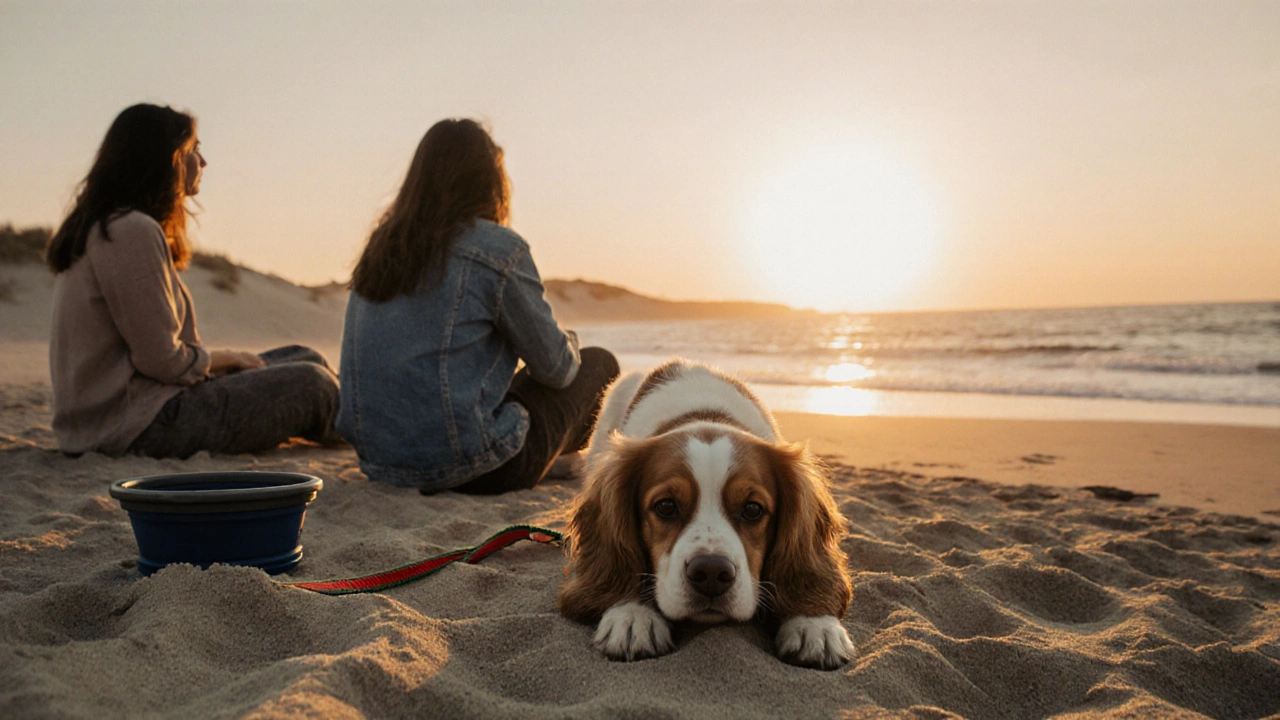
What to Avoid for Travel
Some dogs look adorable in photos-but terrible on a trip. Skip these if you want stress-free holidays:
- Great Danes, Mastiffs, Saint Bernards - Too big for most hotels, cars, or planes. They also overheat easily.
- Border Collies, Australian Shepherds - Brilliant, but they need mental and physical work every day. Without it, they’ll chew your shoes or bark nonstop.
- Chihuahuas and toy breeds - Prone to anxiety and fragile bones. They can get hurt easily in crowds or on uneven trails.
- Brachycephalic breeds (Pugs, Bulldogs, French Bulldogs) - They struggle to breathe in heat, humidity, or high altitudes. A 75°F day can be dangerous for them.
These dogs aren’t bad pets. But they’re not built for travel. Choosing one for a vacation is like bringing a snowmobile to the desert-it just won’t work well.
Real Travel Tips for Your Dog
Even the best dog needs preparation. Here’s how to make sure your trip goes smoothly:
- Start small. Take a 2-hour drive to a nearby park first. See how they handle the car, noise, and new smells.
- Get them used to their carrier or seat belt. Let them sleep in it at home before the trip.
- Bring familiar items. A blanket with your scent or their favorite toy helps reduce anxiety.
- Plan breaks. Stop every 2 hours for potty and water. Don’t wait until they’re desperate.
- Check hotel policies. Some places charge extra, limit weight, or ban certain breeds. Always call ahead.
- Keep them cool. Never leave a dog in a parked car-even with the windows cracked. Temperatures inside can hit 120°F in under 10 minutes.
Most importantly: know your dog. If they get carsick, have anxiety, or hate being around strangers, a vacation might not be the best idea-yet. Training and gradual exposure can help, but forcing a reluctant dog into a travel situation causes stress for both of you.

Adopting vs. Buying
Many people assume the best travel dog is a purebred. But shelters are full of mixed-breed dogs with perfect travel temperaments. A 5-year-old rescue who’s already been through a few road trips might be a better fit than a puppy you’ve never seen in a car.
When adopting, ask:
- Has this dog been in a car before?
- Do they get anxious around strangers or loud noises?
- Have they stayed in a hotel or rental?
Rescue organizations often know their dogs better than breeders do. A dog who’s been fostered in a home with guests, kids, and noise? That’s your ideal travel companion.
Final Thought: It’s Not About the Breed-It’s About the Fit
The number one dog for dog-friendly holidays isn’t the most popular breed. It’s the one that matches your lifestyle. If you’re quiet, like slow walks, and value calm companionship, the Cavalier King Charles Spaniel is your match. If you’re an outdoor adventurer who hikes 10 miles a day, a Border Collie mix might be better. If you live in the city and rarely leave, a Shih Tzu could be perfect.
Don’t pick a dog because it’s trendy. Pick one because it fits your life-and your next vacation.
Can any dog go on a plane?
Most airlines allow small dogs in the cabin if they fit under the seat in an approved carrier. Dogs over 20 pounds usually have to travel in cargo, which is riskier and more stressful. Always check the airline’s weight limits, breed restrictions (especially for flat-faced breeds), and health certificate requirements before booking.
What’s the best way to train a dog for travel?
Start with short car rides and reward calm behavior with treats or praise. Gradually increase the time and add new environments like parking lots, pet-friendly cafes, or quiet trails. Practice having them stay in their carrier or on a mat while you’re away for short periods. Consistency matters more than intensity.
Do travel dogs need special gear?
Yes. A secure harness or car seat belt, a collapsible water bowl, a lightweight bed or blanket, and a portable poop bag dispenser are essentials. A GPS tracker collar is a smart investment-especially if your dog is curious or easily distracted. Don’t forget their food, medications, and vaccination records.
Are there places dogs aren’t allowed on vacation?
Yes. National parks often restrict dogs from trails and backcountry areas. Beaches may ban dogs during summer months. Some historic sites, museums, and restaurants don’t allow pets-even on patios. Always check rules before you go. Websites like BringFido.com list pet-friendly locations by region.
How do I know if my dog is stressed during travel?
Signs include panting without heat, pacing, whining, drooling, shaking, loss of appetite, or trying to hide. Some dogs will lick their paws nonstop or have accidents indoors. If you see these signs, stop and give them time to calm down. Don’t push them to keep going. Their comfort matters more than your itinerary.

